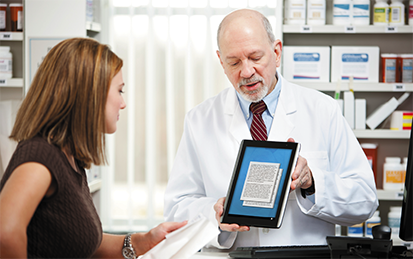14
Medication Safety
Learning Objectives
1 Describe patient medication rights, the extent of preventable medication errors, and the effects of errors on patient safety and healthcare costs. (Section 14.1)
2 Identify specific categories of medication errors, their causes, and how to avoid them. (Section 14.2)
3 Describe the various potential errors per each step of the dispensing process. (Section 14.3)
4 List tools to assist in preventing medication errors, including the use of automation and package design. (Section 14.4)
5 State why errors are unreported and what can be done to insure proper reporting. (Section 14.5)
6 Identify the common programs available for reporting medication errors. (Section 14.5)
7 Define FDA safety strategies to prevent adverse effects in high-risk drugs, including Medication Guide and REMS programs. (Section 14.6)
8 Differentiate the terms drug tolerance, psychological and physical dependence, and addiction. (Section 14.7)
9 Explain why prescription drug abuse is a public safety issue. (Section 14.8)
10 Describe ways to detect drug seekers and forged prescriptions for controlled drugs. (Section 14.8)
11 Identify and resolve drug abuse issues among coworkers. (Section 14.8)
12 Outline appropriate behavior during a robbery using the acronym REACT. (Section 14.8)
ASHP/ACPE Accreditation Standards
To view the ASHP/ACPE Accreditation Standards addressed in this chapter, refer to Appendix B.
With the increasing number of drugs dispensed and utilized in community and hospital pharmacies, there are also increasing medication errors and other issues. It takes a team effort to identify, address, and prevent medication errors as they involve prescribers, pharmacy personnel, and the nursing staff. This chapter examines the types and causes of medication errors, the strategies that pharmacies can implement to prevent or minimize these errors, and the automation technologies and drug safety monitoring systems that are making a positive impact. Several government and professional programs offer safety-promoting resources. With greater understanding and resources, you can establish personal best practices to promote safety throughout the prescription-filling process.
Medication safety, however, goes beyond the dispensing process to include public health safety. This means preventing birth defects from pharmaceuticals, as well as substance abuse in individuals, in pharmacy staff, and within communities. It also means working to avoid drug thefts and being ready to protect oneself during a robbery. The common goal of all of these safety initiatives is to protect the well-being of patients, personnel, and the community at large. As a pharmacy technician, you can play a crucial role in all of these safety arenas. By doing so, healthcare costs decrease, and quality of life improves for all.

The profession of pharmacy exists to protect the safety of patients from medication errors and adverse effects of drugs. Technological innovations assist the pharmacist and technician in fulfilling this responsibility.